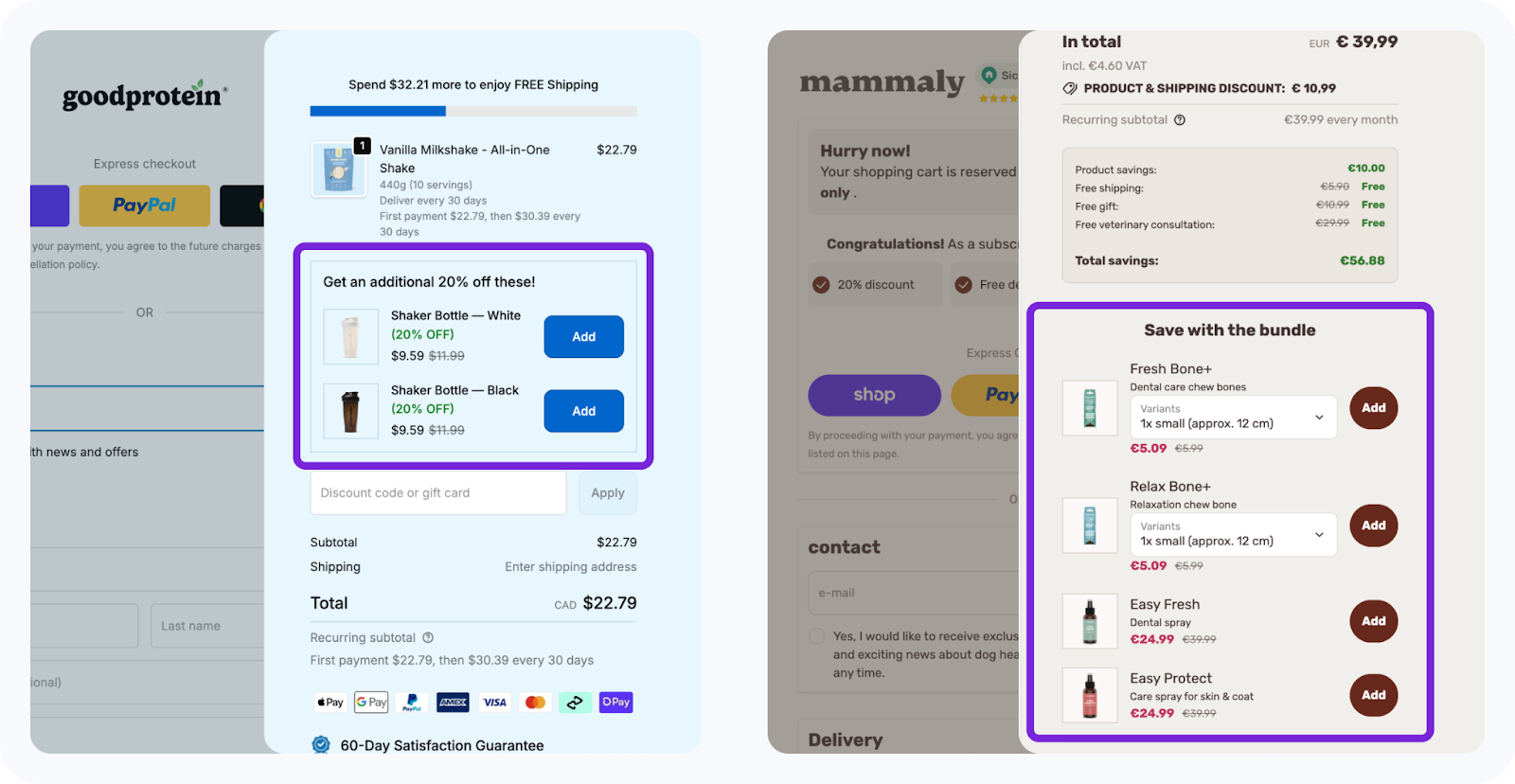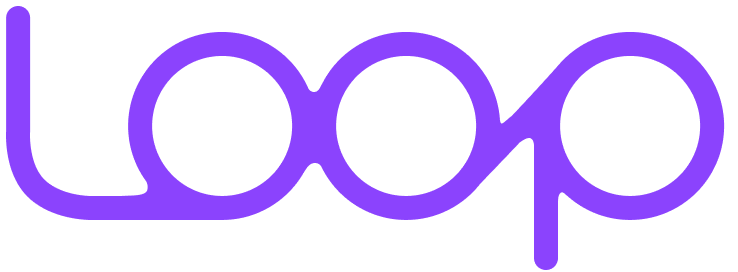Cart vs. Checkout Upsell: Which Converts Better for Shopify Subscription Brands?
TL;DR
Cart upsells (before checkout) and checkout upsells (at the moment of purchase) both aim to boost average order value (AOV) — but they operate in very different buyer‑mindsets. For Shopify stores with subscription models, checkout‑placed upsells generally deliver higher acceptance rates when done properly because the buyer is already committed to purchase. That said, cart upsells still play a key role in bundling or add‑on strategies. Testing both + retention‑focused follow‑through is the winning play.
Why Upselling Placement Matters for Subscription Brands
For brands built on subscriptions, every new order isn’t just immediate revenue — it’s a doorway to lifetime value (LTV). Raising AOV at signup (when the customer first subscribes) improves the speed to break-even and increases long‑term revenue potential. Placement of your upsell offer—either in the cart (before checkout) or during checkout—matters because the buyer’s intent and mindset differ.
Plus, under subscription models, you often have an extra benefit: the initial order can lead into future recurring revenue, meaning the decision to upsell isn’t just “one extra item” but “higher tier / more value from day one.” That makes the placement and timing even more strategic
Cart Upsells vs. Checkout Upsells: A Breakdown
What is a Cart Upsell and When Does It Work?
A cart upsell is presented to a customer when they’ve added products to the cart but before they hit the checkout page. For example, “Hey — you’re buying X; add Y for just $Z more.”

Why it works:
- Exploration Mode: The customer is still in exploration mode and may be open to additional items.
- Bundling and Accessories: Great for bundles, accessories, and complementary items (especially one‑time purchases alongside subscriptions).
- Increases AOV Before Payment Friction: It increases AOV before the customer reaches the checkout page.
According to Shopify, cart placement "capitalizes on the customer's existing buying momentum… reviewing their cart and making final decisions."
Considerations:
- Cart stage still has a risk of abandonment—adding extra offers could increase complexity or hesitation.
- For subscriptions specifically, you should ensure the upsell aligns with the subscription offer (e.g., higher tier, added service) rather than random add‑ons.
What is a Checkout Upsell and When Does It Work?
A checkout upsell occurs when the customer is already in the checkout process—right before payment or right after, but still in transactional flow. For subscription brands, this might mean “upgrade to premium subscription for extra benefits” at checkout.

Why it works:
- Commitment: The customer has committed—they’re about to buy—so their purchasing mindset is strong.
- Conversion Rates: According to Cloudways, top‑performing e‑commerce stores report checkout upsell acceptance rates above 15% by placing offers at the checkout moment.
- Reduced Abandonment: Checkout upselling also reduces the risk of abandonment because the decision to purchase is already underway.
Another guide on Bogos claims that checkout upselling can result in conversion rates soaring up to 65–80% compared to pre‑purchase upselling (although these high figures typically reflect specific funnels and targeted upsell strategies).
Considerations:
- The offer must be extremely relevant and friction‑free (e.g., one click, no major additional steps).
- For subscriptions, you want the upsell to link to long‑term value (higher tier, add‑ons) rather than just "buy one more item" (unless that makes sense for your model).
Which Placement Should Your Shopify Subscription Brand Use?
Strategic Decision‑Tree for You
Here’s a quick breakdown of each placement type and the best scenarios for using it:
What Does Your Product/Subscription Funnel Look Like?
- Cart Upsells: If your subscription is low‑price or if you want to add complementary items (e.g., starter kit + accessories), cart upsells may make sense.
- Checkout Upsells: If your subscription has tiers (e.g., basic vs premium) or you have high value from day one, checkout upsells are usually better.
What Is Your Buyer Intent/Mindset at Each Stage?
- Cart: Customers are still comparing options and are open to add‑ons.
- Checkout: Customers are committed, so offering an upgrade or premium option is more likely to convert.
What is the Friction Cost?
The fewer extra clicks involved, the higher likelihood of acceptance. Checkout upsells must be integrated smoothly into the payment flow.
What Is Your Retention Impact?
With subscriptions, the upsell isn’t just about the initial order — it’s about retention too. If a checkout upsell positions a higher tier with more benefits (and therefore more retention risk), you must ensure the customer will stay engaged.
Retention Implications – Why Subscription Brands Care
For subscription brands, upsells are more than just “spend more now.” They impact lifetime value and churn. If you get a higher tier subscription at checkout, you must deliver value in a way that reduces churn. This means the upsell should:
- Be aligned with the subscription service (not just a product add‑on).
- Be clearly communicated as beneficial and not just transactional.
- Be integrated into a retention pathway (e.g., welcome email, onboarding, portal experience) so the upsell yields long‑term benefits.
This is where platforms like Loop Subscriptions can help by enabling smooth upgrade flows, personalized customer portals, and post‑purchase engagement. By providing a holistic retention experience, Loop helps ensure that upsells are not just a quick revenue boost but part of a longer‑term retention strategy.
Best Practices for Each Placement
Cart Upsell Best Practices:
- Show only 1‑2 relevant offers (too many choices = decision paralysis).
- Use bundles or add‑ons that naturally complement the items in the cart.
- Frame the offer as value (“Save ₹X,” “Add for just ₹Y”).
- Ensure the cart page remains fast and friction‑free.
- Monitor cart‑abandonment rate after introducing the upsell.
Checkout Upsell Best Practices:
- Offer upgrade options (e.g., “Upgrade to Premium for ₹X more/month”).
- Keep the price difference within ~10‑30% of the original transaction to increase acceptance (guideline from Focus Digital). (Focus Digital)
- Use a single‑click add button, no extra shipping/payment steps.
- Clearly communicate additional value, especially for subscription tiers.
- After the upsell, quickly activate the onboarding process to reduce churn.
Retention Implications – Why Subscription Brands Care
For subscription brands, upsells are more than just “spend more now.” They impact lifetime value and churn. If you get a higher tier subscription at checkout, you must deliver value in a way that reduces churn. This means the upsell should:
- Be aligned with the subscription service (not just a product add‑on).
- Be clearly communicated as beneficial and not just transactional.
- Be integrated into a retention pathway (e.g., welcome email, onboarding, portal experience) so the upsell yields long‑term benefits.
This is where platforms like Loop Subscriptions can help by enabling smooth upgrade flows, personalized customer portals, and post‑purchase engagement. By providing a holistic retention experience, Loop helps ensure that upsells are not just a quick revenue boost but part of a longer‑term retention strategy.
Best Practices for Each Placement
Cart Upsell Best Practices:
- Show only 1‑2 relevant offers (too many choices = decision paralysis).
- Use bundles or add‑ons that naturally complement the items in the cart.
- Frame the offer as value (“Save ₹X,” “Add for just ₹Y”).
- Ensure the cart page remains fast and friction‑free.
- Monitor cart‑abandonment rate after introducing the upsell.
Checkout Upsell Best Practices:
- Offer upgrade options (e.g., “Upgrade to Premium for ₹X more/month”).
- Keep the price difference within ~10‑30% of the original transaction to increase acceptance (guideline from Focus Digital). (Focus Digital)
- Use a single‑click add button, no extra shipping/payment steps.
- Clearly communicate additional value, especially for subscription tiers.
- After the upsell, quickly activate the onboarding process to reduce churn.
Recommended Apps for Upsell Implementation
To execute cart and checkout upsell strategies effectively for your subscription‑brand using Loop Subscriptions, consider these top apps:
- Carro – Carro connects Shopify stores, enabling cross‑store selling, ideal for upselling your products or offering complementary items from other stores.
- OneClickUpsell by Zipify – A pre‑ and post‑purchase upsell tool that integrates with Loop, allowing for frictionless upsells at checkout and beyond.
- Rebuy – Rebuy offers a powerful upsell engine, dynamically recommending products based on cart contents, helping increase AOV for subscriptions.
- Zaymo – Zaymo enables one‑click purchases directly in emails, allowing for upsells post‑purchase via the Loop subscription portal, which lowers churn and increases AOV.
How to Test & Measure What Converts Best
- Define your baseline metrics – current AOV, conversion rate, churn for subscription tier.
- Implement A/B tests – place upsell in cart vs place in checkout (keeping offer consistent) for similar traffic segments.
- Measure short‑term metrics – upsell conversion rate (% of customers who accept the upsell) and incremental AOV.
- Measure medium‑term metrics – for subscription customers, measure retention/churn difference for those who accepted upsell vs those who didn’t.
- Decide – if checkout upsell brings higher conversion rate and acceptable retention metrics, lean into it. If cart upsell brings significant AOV lift with low friction and good retention, you may build both.
Conclusion
When deciding between cart vs checkout upsell placement for your Shopify subscription brand, there’s no one‑size‑fits‑all answer — but some clear patterns:
- Checkout upsells often convert better because the customer is already committed to purchasing.
- Cart upsells still have value, especially for add‑ons or bundling complementary items.
- For subscriptions, always tie the upsell to value and retention.
- The best approach? Test both placements, monitor conversion + retention, and build your upsell path into retention and customer‑lifetime value.
By taking a data‑driven approach and aligning your placement strategy with buyer mindset and subscription funnel, you’ll turn upselling from a quick win into a long‑term growth engine. Book a demo with Loop Subscriptions to see how a retention‑first platform can help you get the most out of your upsell strategy.
FAQ
Q: Does placing an upsell at checkout hurt conversion rate?
A: It can if the offer introduces friction (extra steps, unclear value). But if the upsell aligns with the purchase and is simple to accept, checkout placement often improves conversion because the customer is already committed.
Q: Should subscription brands use cart upsells?
A: Yes — especially when offering add‑ons or complementary items alongside the subscription. Just ensure the offer is aligned with the subscription value and doesn’t distract the purchaser.
Q: What’s a good benchmark for upsell conversion rate?
A: For checkout upsells, top‑performing stores report >15% acceptance, according to Cloudways. For cart upsells, many sources suggest around 20% for upsell efforts in general (Opensend).
Q: How do I ensure that my upsell doesn’t increase churn?
A: Make sure the upsell aligns with long‑term value: offer a higher tier with benefits, ensure onboarding delivers value quickly, and monitor churn for upsell converts vs non‑converts.
Table of contents























.png)







.png)





.png)



































